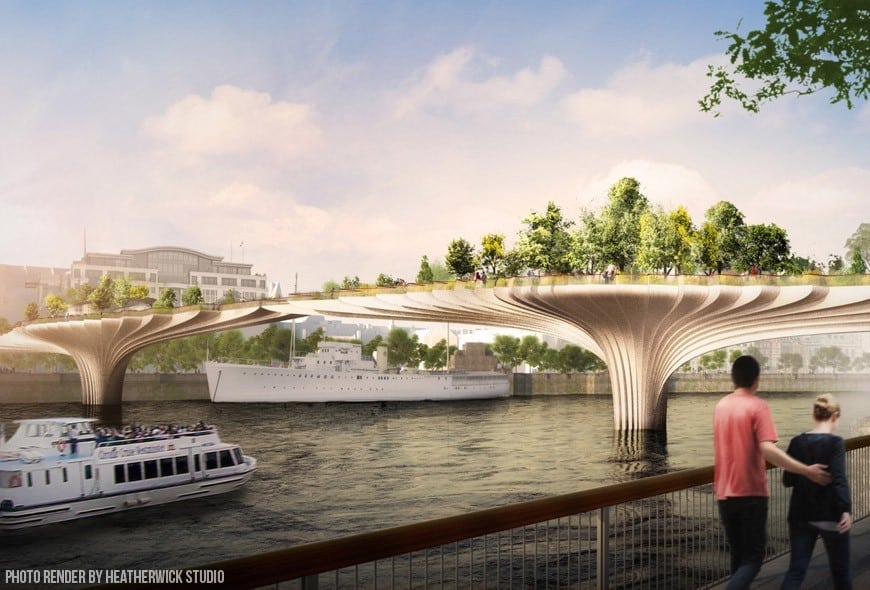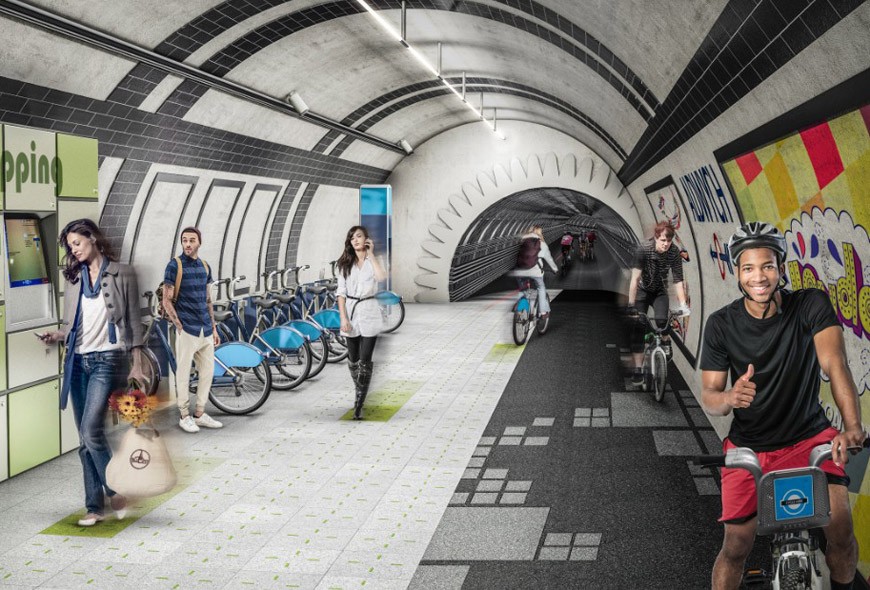By Adriano Pilloni
London isn’t only the main financial European hub – it’s also one of the most innovative and sustainable cities of the “Old Continent.” Indeed, many at PowerHouse Growers have been following how London’s “green” start ups, like Solarbox, have managed to find support from local authorities and appreciation among Londoners.
Moreover, this positive context is attracting more skilled people and funding opportunities, which act as a boost for the development of sustainability focused businesses and projects.
Evidence of sustainability in London can be found in the following two projects, recently supported by London’s authorities, which plan to build an underground cycle path and a garden bridge.
A Sustainable Garden Bridge
The Garden Bridge, approved December 2014 by London Mayor Boris Johnson, is a planned pedestrian bridge designed by the English Architect Thomas Heatherwick and inspired by actor Joanna Lumley’s dream of “a place with no noise or traffic where the only sounds are birdsong and bees buzzing and the wind in the trees, and below the steady rush of water.”
The bridge is expected to open to the public in 2018, to span 367 metres in length and 30 metres in height at its widest point, and to connect Temple station with Southbank.
It will be populated by trees, shrubs, and wildflowers, and it promise to provide to Londoners and tourists a unique walking experience across nature over the Thames.
According to the project’s website, the Garden Bridge has been designed to be “somewhere to meet and spend time, with education and volunteering opportunities so people can get their hands dirty, helping with the upkeep of this new community garden’. ‘It will also provide a new link between cultural centres and tourist attractions on the north and south banks.”
The project will cost £175 million, £110 million of which has been funded by private donors and £60 million by Transport for London and the Treasury.
High public expenses and sentiments of the project being unnecessary have generated some criticism around the project. However, it’s been estimated that as much as seven million trips will be made across the bridge every year.
Mayor Johnson supported it, stating:
“The garden bridge will provide a fantastic new landmark for sustainable London whilst supporting regeneration and economic growth on both sides of the Thames. It will create a stunning oasis of tranquillity in the heart of our city and boost our plans to encourage walking in the city.”
London Underline
The London Underline is a project, proposed by the San Francisco based architecture firm Gensler, that won the “best conceptual project” at the 2015 London Planning Awards.
The project proposes the creation of a network of subterranean walkways and cycleways readapting the abandoned Tube tunnels and other London’s subterranean structures. It also aims to provide underground retail and entertainment spaces, creating new opportunities for business and reducing pedestrians’ pressure on “traditional above-ground” roads, as well as providing a funding opportunity for the project itself.
In order to cover part of its running costs, the project designers plan to implement a kinetic flooring technology to generate electricity.
The areas identified for the project will include the disused Piccadilly Line branch from Holborn to the abandoned Aldwych station, and a path from Green Park to Charing Cross. This network will be accessible and linked with the existing London Tube system.
This proposal had a great success, being praised by London’s Mayor, as it addresses many of the city’s needs. Indeed, the streets of central London suffer high congestion levels, and according to Gensler’s estimations, the city will need to increase its overall energy supply by 20% and its transport capacity by 50% in the next ten years.
Still at it’s early stages, this Sustainable London project could be supported if the feasibility studies will be supportive, it could become reality in the coming years.
This article originally appeared on PowerHouse Growers.


